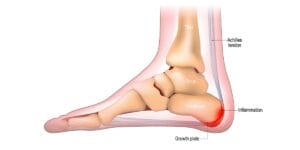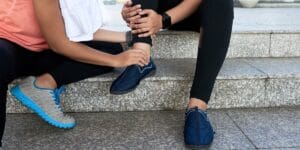Sports and fitness have become big parts of our lives. Unfortunately, athlete’s foot has also become the best known infection you can pick up at the gym. It’s an itchy rash that’s usually red, inflamed, scaly, and highly contagious. The National Institute of Health states that athlete’s foot is a fungal infection affecting 15 to 25 percent of the American population. In other words, millions of people across the US have Tinea Pedis.
How Does it Spread?
- Walking barefoot in public showers, pools or locker rooms
- Sharing towels, socks or shoes
- Having wet, moist socks
- Not drying your feet after a shower or bath
Symptoms:
- Extreme burning and itching symptoms
- Cracks and deep fissures between the toes and along the soles of the feet
- Oozing blisters and ulcers can occur
- Flaking, red, puffy skin
- Discolored toenails – A sign of a fungal infection
Treatment & Prevention:
To avoid getting Athlete’s Foot, avoid going barefoot in common areas and keep your feet dry. The fungus that causes athlete’s foot thrives in warm, wet environments, so washing and drying your feet regularly, changing your socks after exercise, wearing shoes in all common areas in the gym, allowing your gym/athletic shoes time to dry before reuse, regularly cleaning your gym bag, and wearing flip-flops in the shower, will help prevent this common infection.
While some cases of athlete’s foot can be treated with over the counter medicine, the best thing to do is see your Podiatrist who will diagnose and treat accordingly. Your podiatrist may need to prescribe topical or oral antifungal medicine. Oral antibiotics for infections or a type of steroid to treat inflammation. In any case, treatment is very important as the athlete’s foot fungus can spread to your hands, fingernails and groin.
Dr. Anubha Oberoi, DPM



